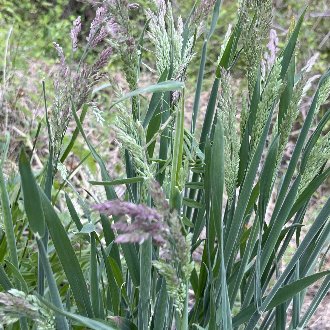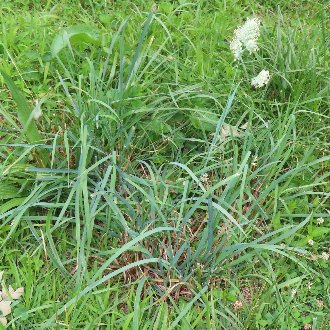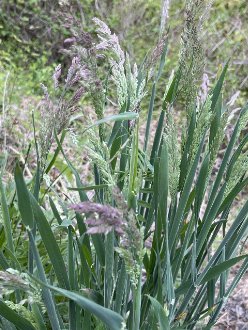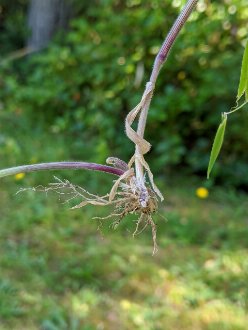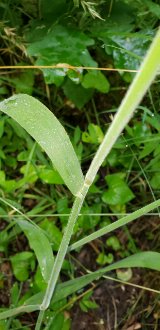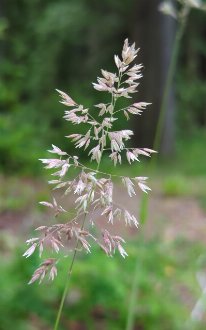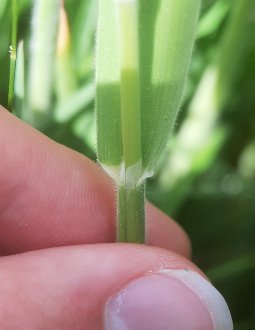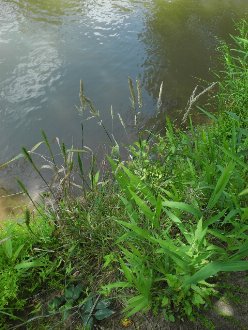Common Velvetgrass (Holcus lanatus L.)
Also known as common velvet grass, velvetgrass, velvet grass, Yorkshire fog, tufted grass, meadow soft grass.
↑Summary
A cool-season grass, annual or short-lived perennial, native to Europe and invasive in North America, preferring wet areas.
↑Range - Expand
| Legend | Color |
| Introduced | |
| Introduced or Not Present |
This tentative map is based on our own research. It may have limited data on Canada and/or Mexico, and there is some subjectivity in our assignment of plants as introduced vs. expanded. Read more in this blog post.
Although this plant occurs somewhere in each of these regions, it may only occur in a small part of some or all of them.
This species has also been introduced to Canada, Mexico, and Alaska; we have yet to build these portions of its map.
↑Similar Plants
↑Life Cycle
This species is either a short-lived perennial or annual. Populations along the East Coast tend to be annual, and in general, its lifecycle changes as a function of environmental conditions.
↑Control
Common velvetgrass is difficult to control for a variety of reasons, and control attempts often have a high negative environmental impact.
The seeds can persist in the soil seed bank. Established plants can resprout vigorously if mowed or weed-whacked, but repeated mowing will greatly reduce seed production and total cover of this species. Because of its short lifecycle and high seed production, care must be taken to time control such that it prevents or at least greatly reduces seed production.
Although velvetgrass is in theory susceptible to herbicides, in practice herbicide is often not effective against it. The dense hairs on the foliage greatly reduce the absorption relative to other grasses. This problem can be mitigated by the use of more and/or stronger surfactants, but surfactants tend to be highly damaging to aquatic life.
This species is also unusually sensitive to the concentration of herbicides used. Too high concentrations can cause top-kill before the herbicide is transported to roots, whereas too low concentrations will simply have no effect on established plants. Even when plants are killed, they can often reestablish from the seed bank.Seedlings can be more sensitive to herbicides, however, and lower concentrations with lower amounts of surfactants can be used, thus minimizing harm to aquatic life.
Manual control is also often not effective for controlling this species, especially when it has been established for a long time, as it readily reemerges from the seed bank and readily recolonizes areas where soil has been disturbed.
Fire is not effective at controlling velvetgrass and it often increases following fire.
Beacuse velvetgrass is a disturbance-loving species, the protection of an area from disturbance can sometimes lead to a reduction in this species. It can be out-competed by other vegetation, especially in the absence of disturbance.
↑Links & External Resources
• Common Velvetgrass | Fire Effects Information System (FEIS) (About This Site)
• Holcus lanatus (common velvetgrass) | USDA PLANTS Database (About This Site)
• Holcus lanatus | Go Botany (About This Site)
• Yorkshire Fog | iNaturalist (About This Site)
• Holcus lanatus | Biota of North America Project (BONAP) (About This Site)
• Holcus lanatus | NatureServe Explorer (About This Site)
• Holcus lanatus | Flora of North America (About This Site)
• Common Velvetgrass | Maryland Biodiversity Project (About This Site)
• Holcus lanatus L. | Plants of the World Online (POWO) (About This Site)
• Holcus lanatus L. (Common Velvet Grass) | Digital Atlas of the Virginia Flora (About This Site)



